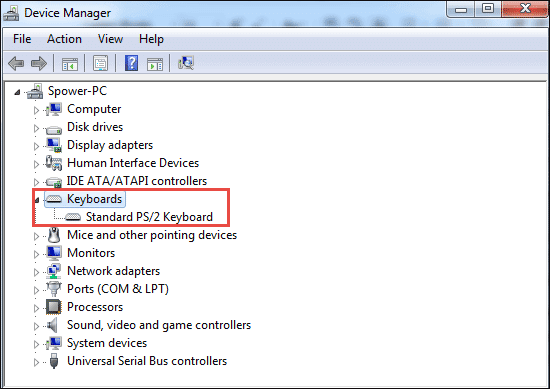Sun Keyboard Driver Windows 7

However, given your stated purpose, the answer is easy: buy one of the new (type 7) USB. I remember seeing a keyboard driver for Sun. Sun keyboard to USB converter. Acts like a Type 6 USB keyboard.but the Sun specific keys can be remapped for use in Windows. Keyboard layout can be changed. Sun Microsystems Type 6 Keyboard.

The converter built as a PIC18F4550 based prototype setup. After hearing positive things about Sun's old keyboards, and the Type 5 in particular, I decided to try and hook it up to a PC. Linux supports them via the serial port and there's a hard to build PS/2 and a half finished USB converter out there; for all compatibility, features and fun I decided to build my own USB converter. The converter should work with Type 4 keyboards too.
The converter offers the following features: • Sun keyboard works as a standard USB (HID) keyboard. • Keyboard is supported in the BIOS and DOS. • Acts like a Type 6 USB keyboard. •.but the Sun specific keys can be remapped for use in Windows. • Keyboard layout can be changed: caps lock/control and escape/tilde can be switched so both PC and Unix style Type 5 keyboards can be set to your preferred layout. • Modifier keys such as alt, meta and compose can be individually switched to their PC keyboard counterparts (ie meta becomes alt). • Keyboard's power key can wake up PC over USB.
Unfortunately the converter has one big disadvantage: the volume and power keys aren't directly recognized as such (this would require implementing a composite USB device). Unix should be able to map commands to their keycodes though, and when put into their secondary mode they do send codes that Windows recognizes.
An application such as can then be used to assign functions to them. See below for more information. The converter schematic - click for larger.
The ISCP connector is used to program the chip, see below. If you have an socket-based PIC programmer you can leave it out. Some other comments on the schematic: • The PIC18F2550 is a very nice smaller (28 pin) replacement chip that works without any modifications to the hard- or software. Make sure to check the pin numbers though, they won't match most of the time. • The 22 µF capacitor C2 supposedly can be anything between 1 and 22uF; it can even be left out altogether (may result in instability).
• The decoupling caps C1 and C2 should be positioned as close as possible to one of the Vdd/Vss pairs. • The USB decoupling cap Cusb can be anything from 220 to 470 nF. • The clock crystal can be replaced by many other sources, see the PIC datasheet.
This requires changes in the configuration fuses and the USART_DIV definition in the source code. • The two inverters can be implemented in various ways, the easiest is a 7404 (or equivalent) inverter chip, which contains six of them. On B4 and later versions of the microcontroller, they should be able to be left out; quote of the B4 errata: 'The TXCKP (BAUDCON) and RXDTP (BAUDCON) bits enable the TX and RX signals to be inverted (polarity reversed).'
Kotok am sigish lyrics. I haven't verified this myself and this isn't done in the code. • The mini DIN-8 connector is numbered looking at the front of a female connector.
• for the pinout of a type B USB socket. • Do not connect a programmer while the USB cable is plugged in. If you want to be able to program the chip while it's plugged in, don't connect the ICSP connector Vdd pin (which means it has to be plugged in for programming to work). • Getting programming errors when using a cheap (homebuilt) programmer? To: There was a note on the Microchip forum (by Olin Lathrop) about programming the dsPIC30F201(**), suggesting to put 22.47 pF on the PGD and PGC lines to ground near the target chip. In addition, put a 100 ohm resistor in series with the PGD line between target chip and the cap.